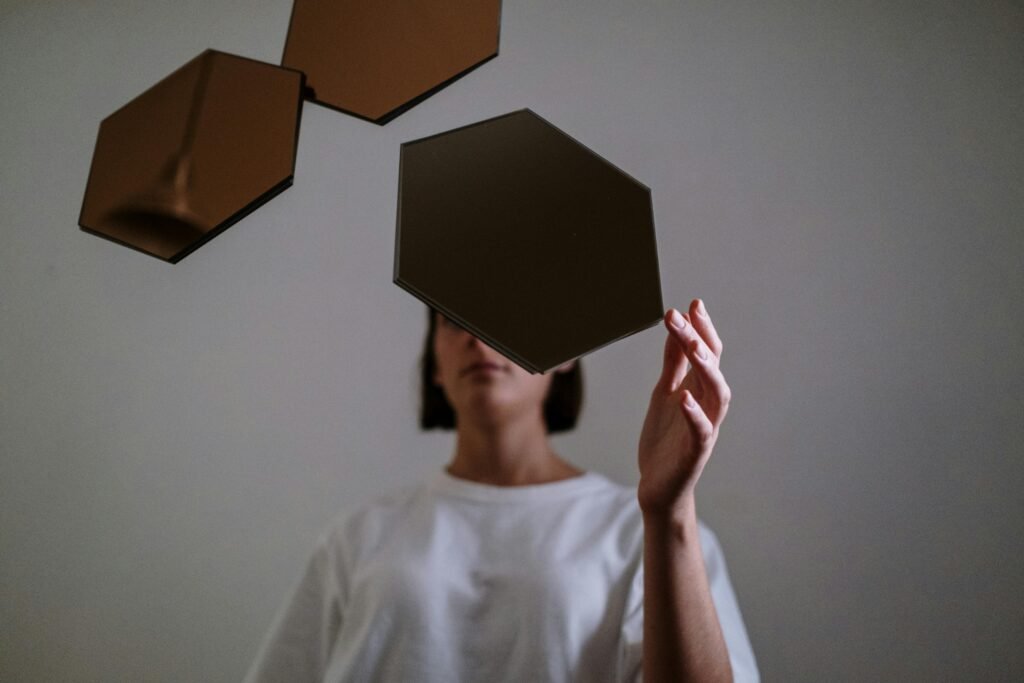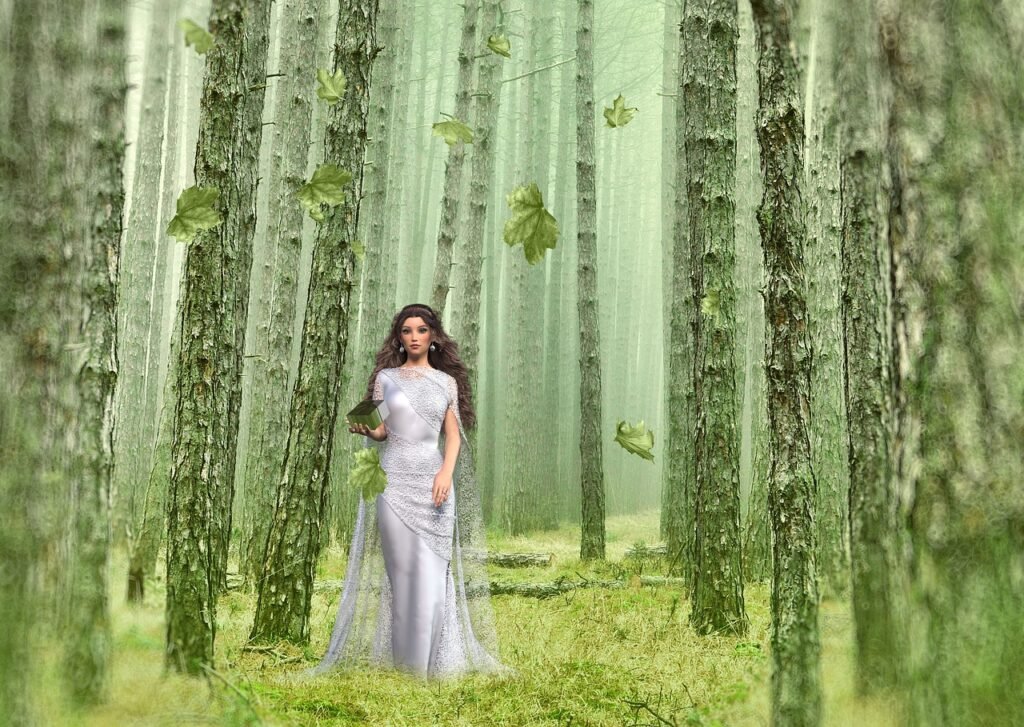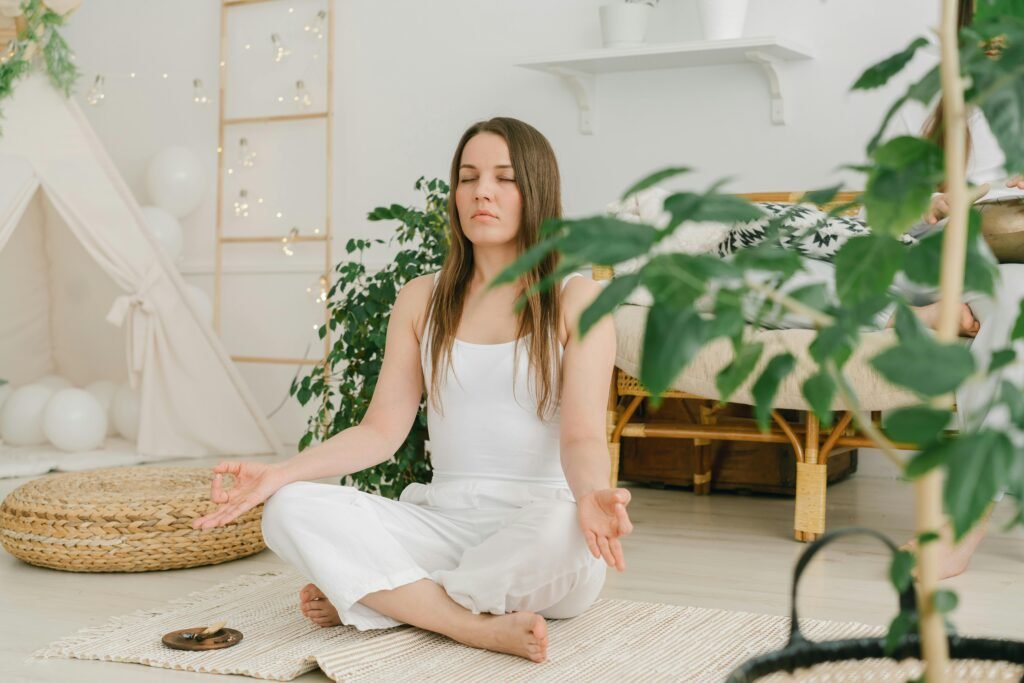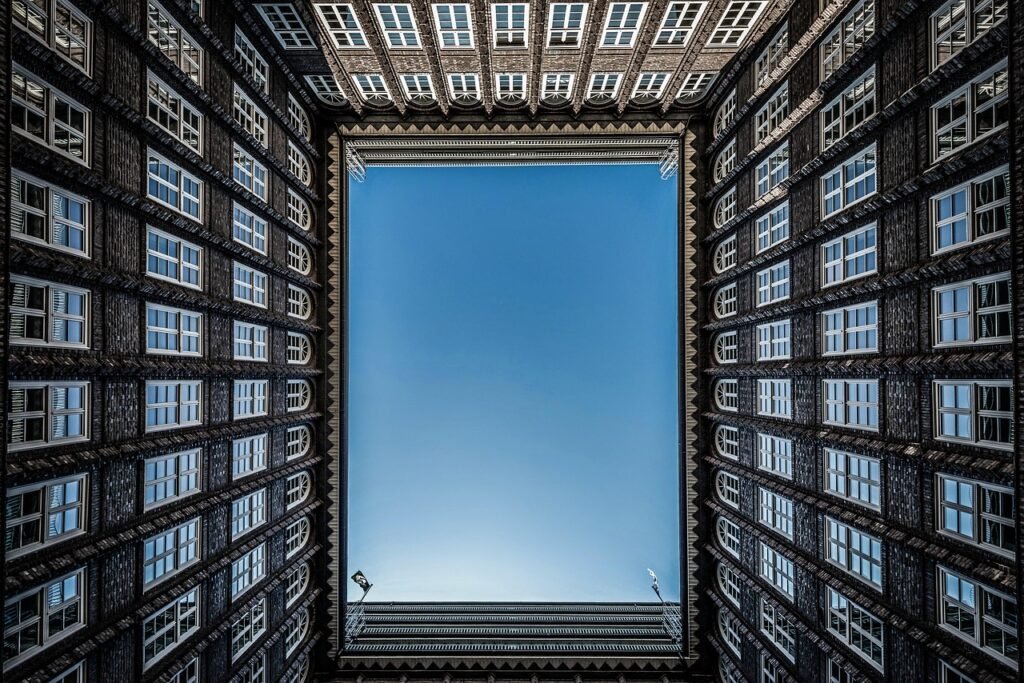
Introduction to Mental Portals
Imagine being able to step into a world entirely of your own creation, a place where the boundaries of reality blur and your wildest dreams take shape.
Mental portals offer a unique and powerful way to explore these realms, using only the boundless potential of your mind.
The concept might sound fantastical, but the process is rooted in well-established techniques of visualization and meditation.
By harnessing these practices, you can unlock doorways to alternate dimensions, providing both a mental escape and a creative sanctuary.
Visualizing portals starts with a simple idea: your mind is the key.
Every imaginative journey begins with a single thought, and with focus, this thought can expand into a fully realized, intricate world.
The beauty of this process lies in its accessibility; no special equipment or extensive training is required, just an open mind and a willingness to explore.
To create your first mental portal, start by finding a quiet space where you can relax without interruption.
Close your eyes and take a few deep breaths to center yourself. Picture a doorway or a window in your mind’s eye.
This portal is your entry point into another dimension. Pay close attention to the details; its color, texture, and design.
Is it an ancient wooden door covered in ivy, or a sleek, futuristic sliding panel?
The more vivid the image, the stronger your connection to this mental gateway will be.
As you become more adept at this initial stage, you can begin to add layers to your visualization.
Think about what lies beyond the portal.
Perhaps it’s a vast, star filled universe, a serene beach with golden sands, or a fantastical forest filled with glowing plants and mystical creatures.
Use all your senses to enrich this scene: the smell of saltwater, the sound of rustling leaves, the warmth of the sun on your skin.
These sensory details bring your imaginary world to life, making it feel tangible and real.
The practice of crafting mental portals is not just a flight of fancy; it’s a form of mental exercise that can enhance creativity, reduce stress, and offer new perspectives.
By dedicating time to explore these mental landscapes, you can tap into a wellspring of inspiration and unlock the infinite potential of your imagination.
So, prepare to delve into the art of visualization and start your journey to otherworldly realms.
Setting the Stage for Visualization

To effectively embark on this journey, it’s crucial to set the right mental stage.
Begin by creating a calm and focused environment.
Find a quiet space, free from distractions, where you can center yourself.
Grounding is equally important, helping you connect with the present moment and clear your mind.
This mental preparation is akin to setting the scene for a performance, ensuring you are fully engaged and ready to explore.
Additionally, visualization aids learning and memory retention by allowing you to connect complex information with vivid images.
Start by sitting or lying down in a comfortable position.
Close your eyes and take several deep breaths.
Feel your body relax with each exhalation, and let go of any lingering tension.
It’s important to be fully present in this moment, allowing your mind to quiet down from the noise of daily life.
You might find it helpful to focus on your breathing as a way to center yourself further.
Now, begin to build your mental scene.
Imagine a blank canvas or a dark, empty space in your mind.
Gradually, start to visualize a doorway or window forming within this space.
Pay attention to its details; its shape, color, and texture.
This will be your entry point into another dimension.
The more vividly you can imagine it, the stronger your mental connection to this portal will be.
Next, think about what kind of world you want to enter.
Whether it’s a serene beach, a bustling city, or a fantastical landscape, envision this place with as much detail as possible.
Incorporate all your senses into this visualization.
What do you see? What sounds are present? Can you smell anything in the air? How does the environment feel against your skin?
This multisensory approach will make your imaginary world more tangible and immersive.
Practice this visualization regularly, each time adding more details and layers to your scene.
Over time, you’ll find it easier to slip into these mental landscapes and explore them more deeply.
By dedicating time to this practice, you’ll enhance your ability to create and navigate these imaginary worlds, making each journey more vivid and enriching.
Basic Techniques for Mental Visualization

Starting with basic visualization techniques is essential for beginners.
Begin by imagining simple imagery, such as a door or window.
Focus on these images in detail, noting their color, texture, and shape.
This step by step process helps build the foundation for more complex visualizations.
Interestingly, athletes use similar imagery techniques to mentally rehearse their actions, which can boost performance and lessen anxiety by allowing them to mentally practice movements and strategies.
Choose a familiar and simple object as your starting point.
For instance, visualize an apple.
In your mind’s eye, see its color, feel its texture, and even imagine its weight in your hand.
The more details you add, the more vivid and real your visualization will become.
Once you can hold this image clearly, you’re ready to move on to more complex scenes.
Next, imagine a more intricate object, like a door or window, as previously mentioned.
Focus on every aspect; its frame, the material it’s made of, any designs or patterns it has.
Pay attention to how it feels under your hand if you were to touch it.
Is it smooth or rough? Warm or cool? Adding these sensory details helps create a stronger mental image.
As you get comfortable with this, start to build a scene around your object.
If you’re visualizing a door, imagine what the door leads to.
Picture the surroundings, the ambiance, and the atmosphere.
What kind of light is there? What are the colors like? The more detailed your visualization, the more immersive your experience will be.
To deepen your practice, try integrating other senses.
Imagine sounds, like the creaking of the door or the distant hum of activity.
Smell the scents that might be present, such as fresh grass or sea air.
These multisensory details enrich your mental imagery, making it more engaging and real.
Practice regularly, and take your time with each step.
Visualization is a skill that improves with consistent practice.
Keep challenging yourself by adding more complexity to your scenes.
Over time, you’ll find that your ability to create vivid and detailed mental images will greatly enhance your overall visualization experience.
Advanced Visualization Strategies

Once you have a solid grasp on basic visualization techniques, it’s time to explore advanced strategies that add depth and complexity to your mental imagery.
The goal is to create richly detailed scenes that fully immerse your senses, making your imaginary portals feel incredibly real.
Start by revisiting the doorway or window you’ve been visualizing.
Instead of stopping at the portal itself, imagine what lies beyond it in greater detail.
Perhaps it’s a vibrant forest filled with ancient trees, their leaves rustling softly in the wind.
Visualize the intricate patterns of bark, the varying shades of green, and the dappled sunlight filtering through the canopy.
The more details you can incorporate, the richer your mental scene will become.
Next, engage all your senses to enhance the experience.
If you’re visualizing a forest, imagine the scent of pine and earth, the sound of chirping birds and rustling leaves, and the feel of the cool breeze on your skin.
By incorporating sensory details, you create a multisensory experience that feels more vivid and tangible.
To add another layer of complexity, imagine dynamic elements within your scene.
Picture animals moving through the forest or leaves fluttering to the ground.
Dynamic elements add a sense of life and motion to your visualization, making the scene feel more immersive.
Advanced visualization also involves creating emotional connections with your scenes.
Reflect on how your imagined world makes you feel.
Is it a place of peace and tranquility, excitement and adventure, or mystery and intrigue?
These emotional layers enrich your experience and make your visualizations more impactful.
Another advanced strategy is to visualize interactions within your imagined world.
Imagine yourself walking through the forest, touching the rough bark of the trees, or picking up a fallen leaf.
These interactions make your mental scenes more engaging and allow you to explore them more fully.
Finally, practice layering multiple scenes together.
Start by visualizing a forest, then imagine transitioning to a new setting, such as a serene beach or a bustling city.
These seamless transitions between different scenes help build your mental agility and ability to navigate complex visualizations.
By employing these advanced strategies, you can transform simple visualizations into intricate, immersive worlds that captivate your senses and stimulate your creativity.
Exploring Imaginary Worlds

Now that you’ve honed your visualization skills, it’s time to embark on a journey through your mental portals and dive into new, uncharted dimensions.
Each world you create is a canvas for your imagination, providing endless opportunities for exploration and creativity.
Picture stepping through your carefully crafted doorway into a realm that feels as real as the world around you.
Imagine entering a lush, enchanted forest where the trees tower high above, their leaves shimmering in hues of emerald and gold.
As you wander through this magical landscape, you might encounter creatures that exist only in your wildest dreams; perhaps a unicorn grazing by a crystal clear stream or a wise old owl offering sage advice from its perch.
Every element of this world is a reflection of your deepest desires and aspirations, brought to life by your mind’s eye.
Alternatively, you could find yourself in a bustling futuristic city, where sleek, towering skyscrapers reach toward the heavens and hovercrafts zip through the air.
The streets are alive with the hum of advanced technology and the buzz of people moving about their daily lives.
In this high tech utopia, you might explore cutting edge labs, interact with AI companions, or simply marvel at the innovative architecture that surrounds you.
For those who crave serenity, an underwater paradise might be the perfect escape.
Visualize gliding through crystal-blue waters, surrounded by vibrant coral reefs and schools of shimmering fish.
The gentle sway of sea plants and the calming sound of bubbles create a peaceful atmosphere where you can unwind and let your mind drift.
Here, you might discover hidden treasures, ancient shipwrecks, or even communicate with friendly marine life.
The beauty of these imaginary worlds lies in their boundless nature.
One day, you might journey to a serene beach where golden sands stretch as far as the eye can see, and the soothing rhythm of the waves lulls you into a state of relaxation.
Another day, you might find yourself exploring a mystical mountain range, scaling peaks that touch the clouds and discovering hidden caves filled with glowing crystals.
Each new dimension you create is a testament to the limitless power of your imagination, offering a sanctuary where you can explore, dream, and find inspiration.
Maintaining and Enhancing Your Skills

Regular practice is essential to keep your visualization skills sharp and to enhance the clarity and richness of your imaginary worlds.
Just like any other skill, the more you exercise your mental imagery, the more vivid and immersive your visualizations will become.
Start by setting aside dedicated time each day for your visualization exercises.
Consistency is key, so even a few minutes each day can make a significant difference over time.
Use this time to explore new scenes, add details to existing ones, or practice transitioning smoothly between different settings.
One effective way to deepen your practice is to journal about your visualizations.
Write down the details of the worlds you create, noting the sights, sounds, and sensations you experience.
This not only reinforces your mental imagery but also provides a tangible record that you can revisit and build upon.
Engaging with a community of like minded individuals can also be incredibly beneficial.
Share your experiences and techniques with others, and be open to learning from their insights and methods.
Online forums, social media groups, or local meditation and visualization workshops can be excellent places to connect with fellow explorers.
The exchange of ideas can spark new inspiration and help you discover fresh approaches to your practice.
Another way to enhance your skills is by integrating visualization into your daily life.
Use moments of downtime, such as during your commute or while waiting in line, to mentally visit your imaginary worlds. This keeps your skills honed and makes the practice a natural part of your routine.
Experiment with different types of visualization exercises to keep your practice engaging.
Try visualizing objects, scenes, or even complex scenarios that involve movement and interaction.
Challenge yourself to add more sensory details, like sounds, smells, and tactile sensations, to enrich your mental imagery.
Mindfulness and meditation can also play a significant role in maintaining and enhancing your skills.
Practices that focus on present moment awareness can help clear mental clutter and improve your ability to concentrate on your visualizations.
Consider incorporating mindfulness techniques into your routine to create a more focused and relaxed mental state, which is conducive to vivid and detailed visualization.
By committing to regular practice and staying open to new ideas and techniques, you’ll find that your ability to create and navigate imaginary worlds will continue to grow and evolve.
Examples of Imaginary Portals

Many people have found incredible ways to bring their imaginary worlds to life through mental portals, often sharing their experiences to inspire others.
One individual, for instance, envisioned a sprawling garden filled with flowers that change colors with each breath.
This person described the smell of blooming roses and the soft hum of bees, creating a vibrant and dynamic space for relaxation and creative thought.
Another example comes from a person who created a futuristic cityscape where towering skyscrapers glow with neon lights.
They described walking through bustling streets filled with advanced technology, from floating vehicles to interactive holograms.
This setting became a source of inspiration for their creative projects, providing a mental playground where innovation knows no bounds.
A particularly imaginative example involved a serene underwater kingdom.
The creator visualized gliding through crystal-clear waters, surrounded by vibrant coral reefs and playful dolphins.
The sensation of weightlessness and the sound of bubbles provided a peaceful escape, perfect for meditation and stress relief.
Yet another individual shared their journey through a mystical forest where each tree had its own unique personality.
The forest was filled with talking animals, ancient ruins, and hidden paths leading to new adventures.
This richly detailed world offered endless exploration, helping the creator tap into a deep well of inspiration for storytelling and artistic endeavors.
For those who prefer more cosmic explorations, one person visualized traveling through a galaxy filled with planets of varying sizes and colors.
They described the experience of floating in space, feeling the gentle pull of gravity from nearby stars, and marveling at the beauty of distant nebulas.
This cosmic journey provided a sense of wonder and awe, fueling their curiosity about the universe.
These examples highlight the limitless possibilities of using mental portals for creativity, relaxation, and personal growth.
By drawing inspiration from these shared experiences, you can explore new dimensions and unlock the full potential of your imagination.
